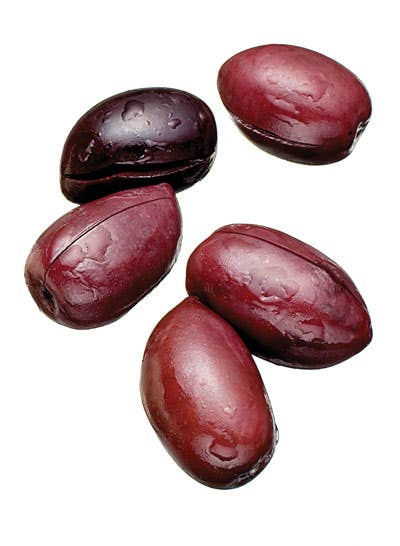
Mighty Olive
No olives are as famous as kalamatas, the sweet, meaty, purple-black fruits that are tossed into salads around the world. Kalamatas are named for the port city in the Peloponnese from which the olives have been shipped for export for centuries, and although the variety now grows across Greece (350 million trees yield fruit every year), that region remains the country's largest producer. Unlike Greece's koroneiki olives, which are raised for oil, kalamatas are meant for the table; they're baked in breads, turned into spreads, and eaten as meze. The best come from the town of Sellasia, where the trees grow in the foothills of Parnonas Mountain. Here, the minerality of the soil, spare irrigation, and cool nights result in kalamatas with a concentrated richness. They are cured in brine to mellow their bitterness, then packed in a brine with red wine vinegar for shipping. Though it's traditional to slit the olives to allow the brine to soak in, some growers nowadays are forgoing the slicing to keep the olives firm. A second-generation kalamata grower, Anastasia Kanellopoulou, suggests that the best way to keep kalamatas after buying them is to drain the tart liquid and store them in olive oil to preserve their sweetness.
Keep Reading
Continue to Next Story










